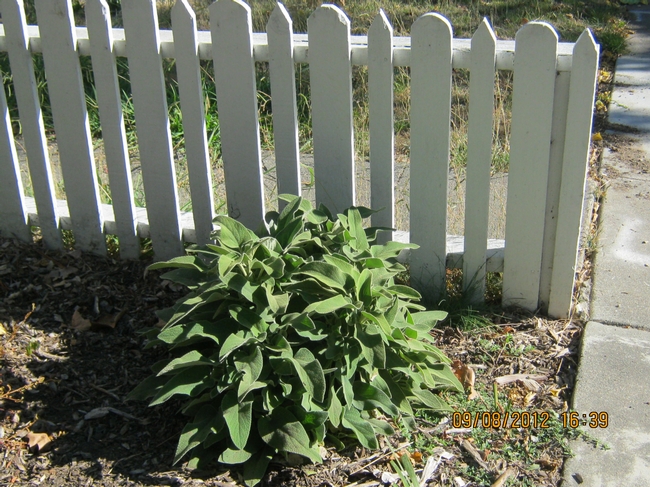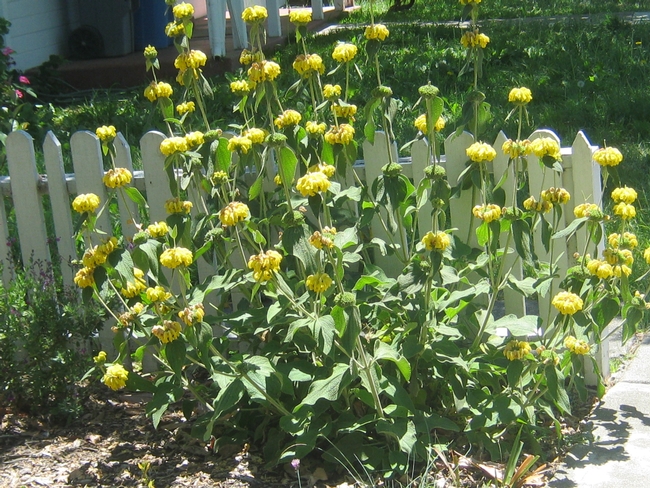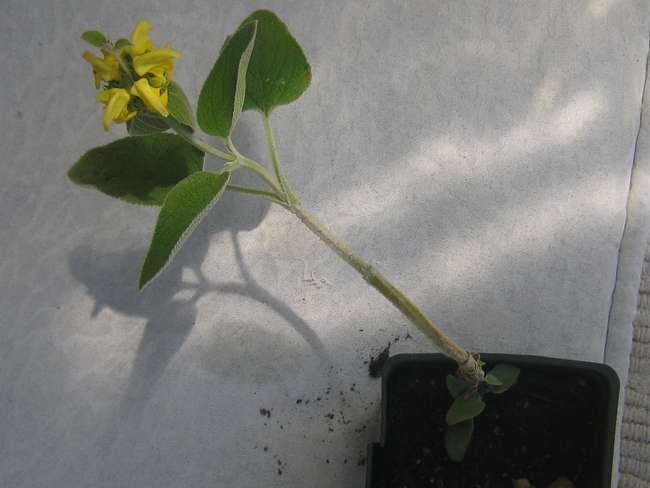Phlomis fruticosa (Jerusalem Sage), family Lamiaceae. Mediterranean native, perennial evergreen. Suitable for heavy clay soils. Drought tolerant, a little water is fine but do not overwater. Its fuzzy blue-green, fragrant foliage contrasts well with bright yellow flowers (also has pink variety) arranged in whorls, with several on one vertical stalk, one on top of another. Deer resistant, attractive to bees, butterflies and birds (a good "habitat" shrub). Combines well with ornamental grasses, lavender, salvia (especially blue flowers), or with chartreuse (Spirea 'Lime Mound' or Abelia variegated). Blooms April/May/June. Cut flowers are nice. In February/March, cut off spent flower stalks. Stalks and seeds are ornamental when dry and provide winter interest and food for birds. Averages 4' x 4', but it can assume a much wider stance. http://ucanr.edu/sites/scmg/Plant_of_the_Month/May_2007-Phlomis_Fruticosa
In my western-facing front yard, it really took off this spring, the mounded foliage expanding up and out until spikes finally emerged. Very interesting to watch its evolution. Each new spike spirals upward, a blossom emerges, another spike, another blossom--seemingly endless. It has drawn many a comment and cutting request from passersby. It seems okay with early sun/shade and late day sun, but it handles full sun and high heat. Easy to grow? I took one cutting, it's now 6" with 5 leaves and--wow--a blossom. Time to make more for the October plant exchange.
I initially thought this was a Salvia spathacea (Hummingbird/Pitcher Sage), a California native endemic to the coast, stretching from Orange County to the Napa Valley. The flowers and form are quite similar. Our Master Gardener Program Coordinator, Jennifer Baumbach, has one in her yard and confirmed its true identity. I am forever learning from other Master Gardeners and most grateful for their accrued knowledge.


